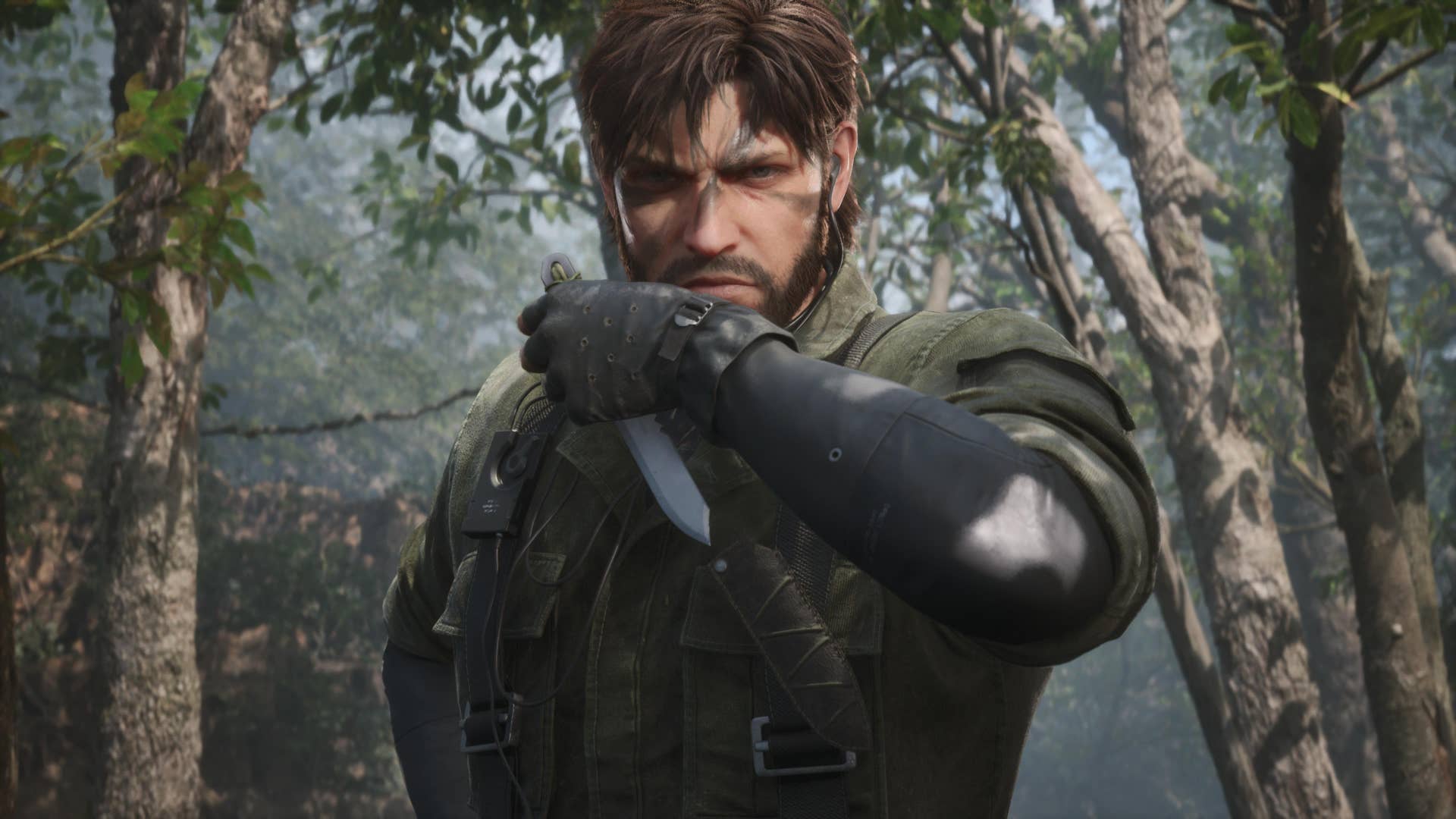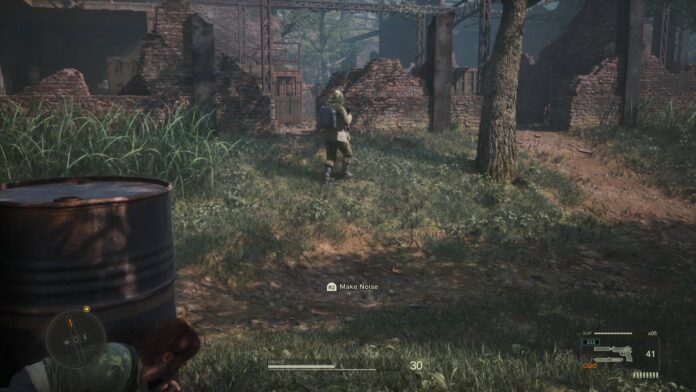How crisp and 4K-ified a nostalgic menu looks on a big TV is the silliest thing I’ve ever been excited about, but Metal Gear Solid Delta: Snake Eater is a shot-for-shot remake which luxuriates in the little things.
What makes Metal Gear Solid 3 one of the best games of all time isn’t necessarily its sneaking or its plot, but its inventiveness and reactivity. If you whip the camera around Snake in the medical screen too quickly he falls to his knees and blows chunks when you return to the game, if you quickly snipe a boss after a cutscene hours before his scheduled fight, he’ll be dead when you’re supposed to face him, and rabbit might taste pretty good, but instant ramen noodles are still the greatest food known to man.
It’s full of bespoke, purpose-built mechanics which had never been used before or since, all of which were so exciting in their nerdy but approachable simulation. Whether it’s digging out bullets with a combat knife and bandaging the wound or burning off a fat leech with an equally stubby cuban cigar in the Cure screen, or snaring vampire bats, rats and reticulated pythons to recover your stamina, each moving part is so simply implemented, but with an accessibility that made them iconic.
Metal Gear Solid Delta translates the original’s quirkiness beautifully to a new generation with MGS5-esque controls and modern Unreal 5 engine textures and lighting which don’t so much reinvent the classic, but leverage the soft-focus of memory. Delta looks like you remember MGS3 looking, rather than the sharp, polygonal reality of a 20 year old PS2 game.
The visual improvements are, by-and-large, fantastic, going above and beyond the stretched and muddy environments of a typical HD remaster to deliver lush jungles, dusty mountain trails and austere laboratories which feel dense with granular detail and distinctly different from one another.
You might spot a rough clothing texture here-and-there, but given MGS’s proclivity for crawling through the undergrowth and more portrait close ups than school picture day, everything and everyone looks good.
This gives a new lease of life to one of the more underrated aspects of Kojima games, the kinetic cutscene camera work and shot selection. Once you notice how dynamically and playfully the remade cutscenes are presented, and how much that contrasts with the legendarily (infamously) verbose codec scenes, it drives home even more clearly how perfect Metal Gear Solid is for this visual overhaul.
However, within the remake realm, Metal Gear Solid Delta occupies an interesting spot. While there’s now been a plethora of remakes, remasters and reimaginings from all sorts of studios and genres, it’s obvious that Konami was most inspired (both judging by this and their recent Silent Hill 2 remake) by the Resident Evil remakes.
All of the Resident Evil remakes are great but they make such an interesting contrast with Metal Gear. In Resident Evil 4 Remake, which I expected to be a lot more similar to the dogged, reiterative style of Delta, the development team, comprised of many of the people work had worked on the PS2 version, took the opportunity to “fix” fan-favourite flubs and memes which they obviously felt undermined the vision they were going for but, I feel, lost some of the magic in doing so.
Resident Evil 2 Remake on the other hand was absolutely triumphant in its reimagining of the original game. It felt like a modern game designed with the spirit of the classic that gained a truly innovative impetus from the new technologies and mechanics developed for Resident Evil 7 that it added, creating something which didn’t just reanimate the bones of the old game, but augmented them into something tangibly exciting.
Metal Gear Solid Delta, for all its strengths, doesn’t do that. All of the fun stuff that you remember is still here, ready and waiting for you like a gavial under the waterline. But outside of the new shooting controls, which are a vast improvement even if you try and argue that the original was a more tactile and realistic simulation of the complexity of actually firing a weapon, Delta feels relatively untouched creatively and mechanically.

I’m not saying I wanted Ocelot to suddenly start to hunt you through the jungle like Mr X in Resident Evil 2, but within the wider context of what’s clearly inspired Delta, it doesn’t quite reach the heights of something you’ve never seen before – which is ironic given the greatness of MGS3 lies in its originality.
However, that’s not to say that Delta is low effort in any sense. Its painstaking recreation, which brings back one of gaming’s greatest ever Easter Eggs that was missing in the MGS HD Collection, is saved from tautology both by its completeness and commitment to not providing the path of least resistance.
To give more examples, it would’ve been very easy to forgo the Snake vs Monkey Ape Escape mode as a license not worth the effort, or to brighten up the cave complex after The Pain lest modern players think their HDR is broken, rather than letting Snake’s eyes naturally adjust to the gloom.
So, while there are no less than five other versions of Metal Gear Solid 3, Metal Gear Solid Delta: Snake Eater is now the definitive place to play a bonafide classic in a way that feels both accessibly modern, but still authentic to the original experience.
